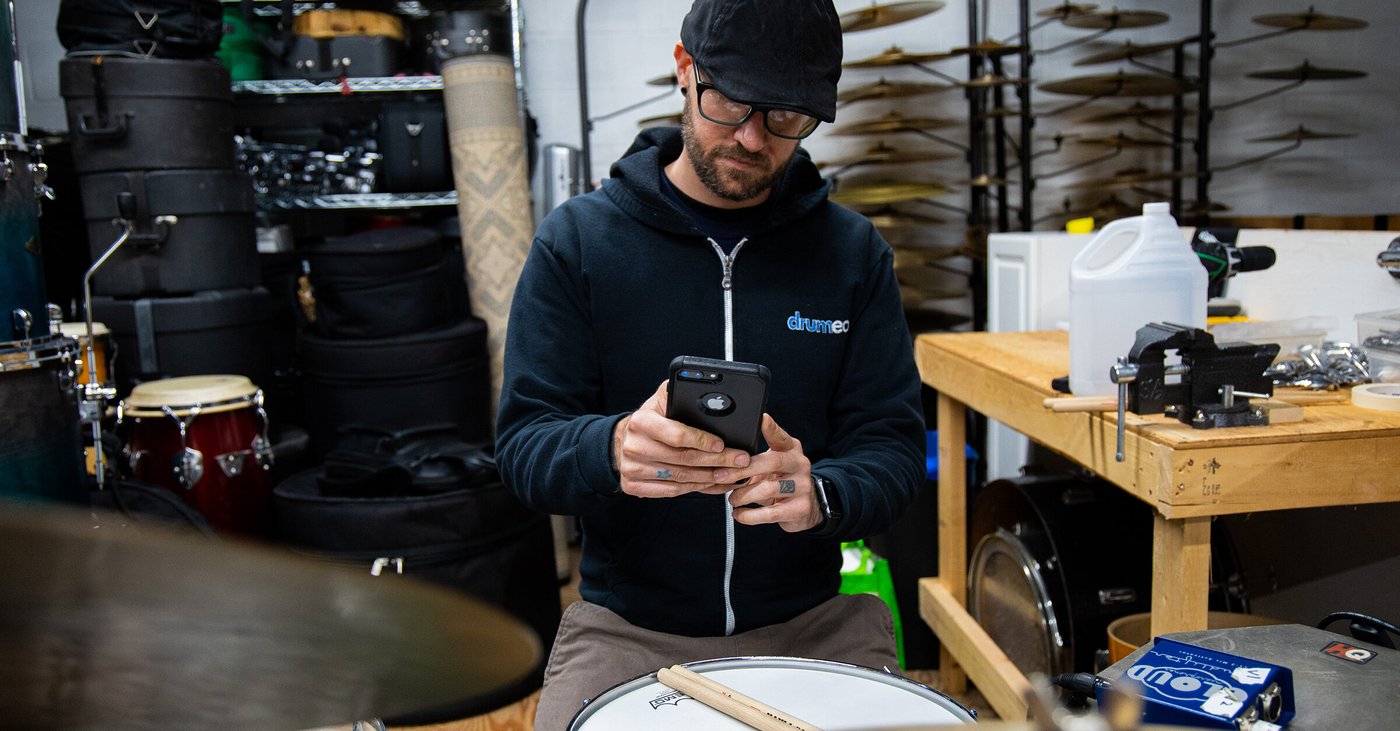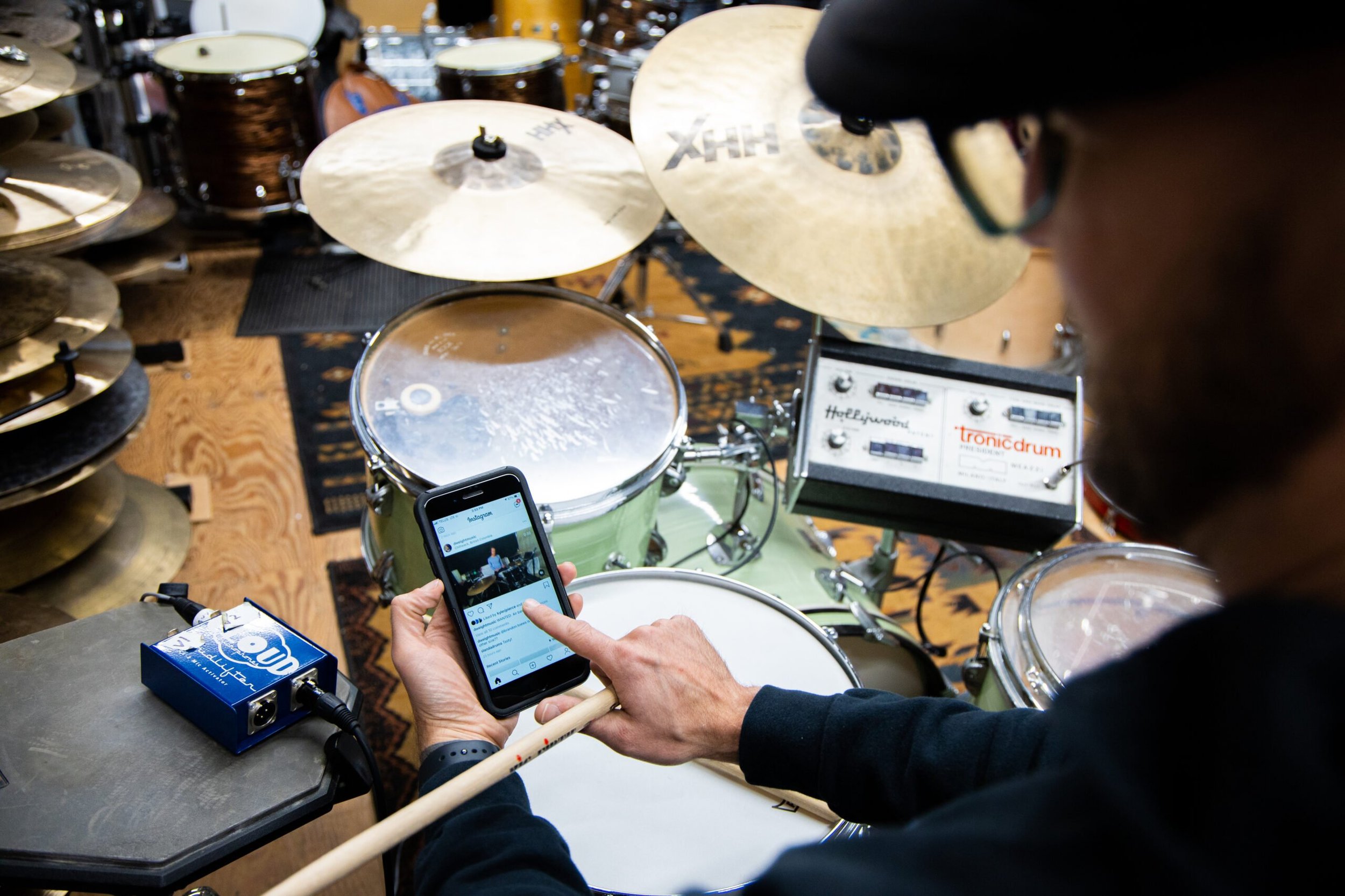
It’s no secret that social media is one of the best ways to get your name out there as a drummer. If you’re a performer, teacher, or entrepreneur, social media is an essential tool in growing your brand. So, how should you go about growing your social platforms?
Firstly, you should see your drumming as a business. Businesses employ certain marketing strategies that give them a game plan to produce content. As a social media content creator, you need a game plan, and regular content is the key to growing a following.
Content types can fall under the following categories:
Hub content is content that is easy to make and can be posted fairly regularly. This forms the bulk of your posts on social media. As a drummer, you can post short clips of you jamming a solo or playing with other musicians. All you need is a camera and a drum kit.
Help content is any picture or video that provides a service to people. It leaves them more informed than they were before viewing the content. This could come in the form of a drum lesson, gear review, or how-to video.
Hero content is top-quality content that gets produced at high levels. This type of content likely gets posted every few months as it takes a lot of time and effort to make. An example of hero content would include hiring a videographer and some fancy gear to make a high-production video.
There are multiple social media platforms and each one has unique features. You should post content that is relevant to the platform. This will keep users engaged in your posts and lead them to follow you in that specific community.
Instagram, for example, is a platform that users scroll through quickly. A regular video has a one-minute time limit. This means that Instagram content should be short and to-the-point. Quick drum grooves or short chop breakdowns tend to work fairly well. Instagram also has IGTV, allowing you to post longer clips. Be very selective with what you post there as IGTV doesn’t do as well as YouTube.
YouTube is the biggest video sharing platform. So if you have big video ideas, you should post them here. YouTube is a great platform to post hero content. Longer videos will do better and YouTube videos tend to keep their traction for a long time, unlike Instagram where videos get lost in the feed after a while.

You need to consistently push out content so that more people are exposed to your pages. Many people post a few hero content videos and expect them to blow up. Unfortunately, social media is so saturated that one or two videos will get lost no matter how good they are. There’s a small chance of them getting traffic on their own. However, they’re guaranteed more traffic if you’re posting content regularly.
Each platform has a different algorithm that lends to consistent posting. When it comes to YouTube, one or two posts a week will keep your numbers ticking. For Instagram, TikTok and Facebook, daily posts will grow your pages.
Most drum pages do community posts. This is when they ask their followers to do a specific thing and tag them. This could come in the form of competitions or fun play-alongs.
Community posts are a great way to connect with that page’s followers. If they share your post, they’ll expose your page to their followers. You can grow your following and support that drum page at the same time.
Many drummers think they need high-end microphones, drum gear, and cameras before posting on social media. Gear can be beneficial, but it’s not necessary for posting content. As long as the viewer can see and hear clearly, you can hook them in. There are small things that you can do to make your content look professional. One mistake that many drummers make is posting videos that look cluttered. Cluttered videos that have several objects in the shot tend to look too busy and have the potential to inadvertently chase viewers away. Make sure your drum space is clean and tidy.
Another tip is to make sure that you and your drums are present in the camera shot. A video that pictures the drummer playing and shows everything they’re doing is going to get more traction than the view of the bottom of a snare drum. Make sure that your camera angle shows off what you’re playing. If you’re rocking around the kit with an all-out drum solo, go with a wide shot. If you’re playing rudiments on the snare drum, a tight shot of the snare could work. Think of what you’d want to see as a viewer and then go from there.
Social media is a gateway to opportunities. If it weren’t for social media, many successful drumming websites wouldn’t get as much traction as they do, and you might not have learned about many of the drummers you follow. If you want to build up your pages, remember to post consistently and structure your content as if you’re marketing a business. These things will grow your pages at a steady rate.
Every drummer has a voice with things to say. Try not to be intimidated by the pages that are already successful and full of content. Be true to yourself and what you can offer. Good luck out there!
Diego Cardini is a writer, performer and educator based in Buenos Aires, Argentina. He started drumming at the age of 12 and played in numerous bands, going through several music styles. He currently runs thedrumninja.com, a drumming resource for drummers of all levels.


By signing up you’ll also receive our ongoing free lessons and special offers. Don’t worry, we value your privacy and you can unsubscribe at any time.
We use cookies for traffic data and advertising. Cookie Policy »